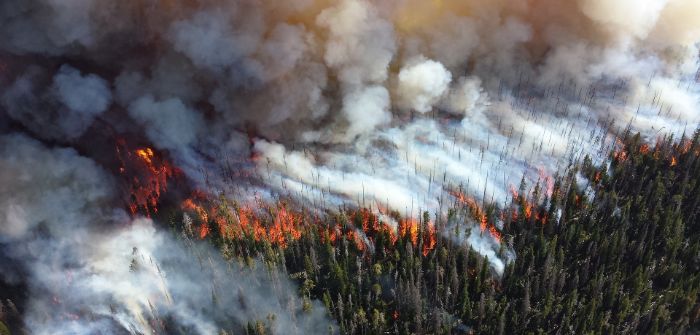NASA’s ECOsystem Spaceborne Thermal Radiometer Experiment on Space Station (ECOSTRESS) is aiding in the fight against fires in the Western US, according to the NASA Jet Propulsion Laboratory.
The instrument, which is on the International Space Station, is uniquely positioned to provide wildfire responders with a high-resolution look at fire progression.
As of July 28, 2021, the size of the Bootleg Fire in southern Oregon, US, was more than 410,000 acres, making it the largest wildfire currently burning in the US. Wildfire responders have managed to contain about 53% of the fire, and new data from ECOSTRESS is helping.
ECOSTRESS measures surface temperature from the vantage point of the International Space Station, and its ability to observe fires of the Northwest US often twice per day at a high spatial resolution (around 70m) makes it ideal for tracking fires. Researchers on the RADR-Fire team at Pacific Northwest National Laboratory have been experimenting with ECOSTRESS data as part of a new tool now being implemented for first responders like the US Forest Service.
The capabilities of ECOSTRESS are unique. Satellites that acquire data more frequently don’t have high-enough resolution to track the fine line of the fire front, and satellites with higher resolution than ECOSTRESS cross over the same area much less frequently (every five to 16 days).
ECOSTRESS also captured data over Northern California’s Dixie Fire, which has doubled in size to more than 220,000 acres over the last few days. In the Dixie Fire data visualization above, the red areas show the hottest pixels – and fire movement – from July 15 to July 24. The most heavily affected areas are south of Lake Almanor in Plumas County. As of July 27, the Dixie Fire was 23% contained.



